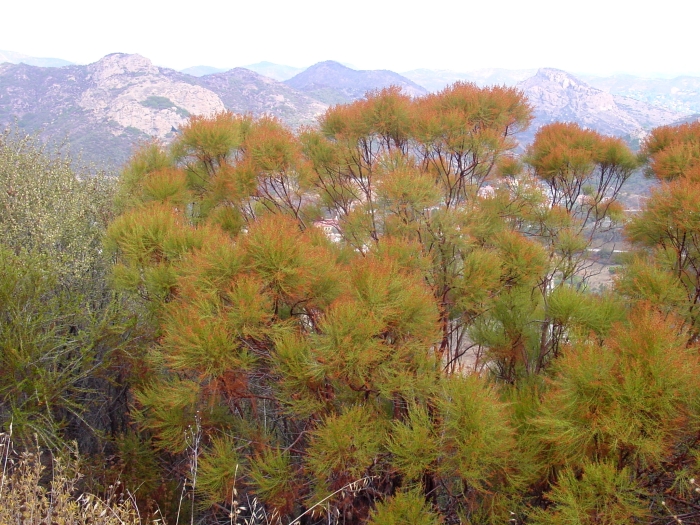Redshanks
(Adenostoma sparsifolium)
Redshanks (Adenostoma sparsifolium)
/
/

Noah Elhardt
CC BY-SA 2.5
Image By:
Noah Elhardt
Recorded By:
Copyright:
CC BY-SA 2.5
Copyright Notice:
Photo by: Noah Elhardt | License Type: CC BY-SA 2.5 | License URL: https://creativecommons.org/licenses/by-sa/2.5 | Uploader: NoahElhardt | Publisher: Wikimedia Commons | Title: Adenostoma_sparsifolium.jpg | Notes: {{Information |Description ={{en|1=''[[:en:Aeonium arboreum|Aeonium arboreum]]'' ([[L.]]) [[Philip Barker Webb|Webb]] & [[Berthel.]], Tree Houseleek; Inflorescence; [[:en:Jardín Botánico Canario Viera y Clavijo|Jardín Botánico Can... |


































































Estimated Native Range
Summary
Adenostoma sparsifolium, commonly known as redshanks or less commonly, ribbonwood or ribbon bush, is a multi-trunked shrub or small tree native to the chaparral and dry slopes of Southern California and northern Baja California. It typically grows to a height of 10-20 feet and a width of 6-10 feet. The plant is characterized by its exfoliating bark that peels away in long strips, resembling ribbons or shanks, which is a distinctive feature of redshanks. The species name "sparsifolium" indicates sparse foliage; it has small, narrow leaves that are adapted to its dry environment. Redshanks are closely related to Chamise (Adenostoma fasciculatum) but are less common. It produces clusters of small, white flowers tinged with red, which bloom in the late spring to early summer and are moderately showy. The flowers are followed by small seed capsules.
Redshanks are valued for their drought tolerance and unique bark texture, making them suitable for xeriscaping and naturalistic plantings in arid regions. They are often used in fire-resistant landscaping due to their ability to resprout after wildfires. In cultivation, redshanks thrive in full sun with low water requirements and prefer well-drained soils. They are low-maintenance plants once established, but they may require occasional pruning to maintain their shape and remove dead wood.CC BY-SA 4.0
Redshanks are valued for their drought tolerance and unique bark texture, making them suitable for xeriscaping and naturalistic plantings in arid regions. They are often used in fire-resistant landscaping due to their ability to resprout after wildfires. In cultivation, redshanks thrive in full sun with low water requirements and prefer well-drained soils. They are low-maintenance plants once established, but they may require occasional pruning to maintain their shape and remove dead wood.CC BY-SA 4.0
Plant Description
- Plant Type: Shrub
- Height: 10-20 feet
- Width: 6-10 feet
- Growth Rate: Moderate
- Flower Color: White, Cream
- Flowering Season: Fall, Summer
- Leaf Retention: Evergreen
Growth Requirements
- Sun: Full Sun
- Water: Low
- Drainage: Fast
Common Uses
Bee Garden, Butterfly Garden, Drought Tolerant, Low Maintenance
Natural Habitat
Chaparral and dry slopes of Southern California and northern Baja California
Other Names
Common Names: Red Shank, Redshank, Ribbonwood, Ribbon Bush
Scientific Names: , Adenostoma sparsifolium,
GBIF Accepted Name: Adenostoma sparsifolium Torr.